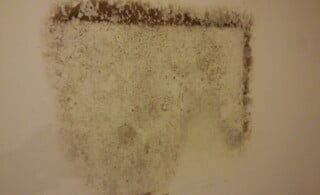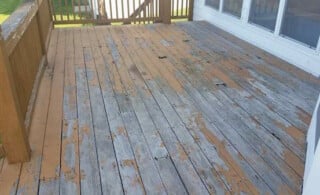The classic instance of Murphy’s Law applies to homeowners insurance too. You only learn about a gap in your coverage when it’s too late—with the flood waters rising; or after the thieves are gone.
It’s a costly discovery that thousands of homeowners make each year. Indeed, the average homeowner loss is approximately $12,500, according to the Insurance Information Institute (III). In the case of fire and lightning, the most severe type of claim, the average loss tops $68,000.
To help make sure your home is adequately covered, we pulled together five common myths about homeowners insurance. If you have any doubts about your coverage, call your provider today. Remember: you never know when disaster will strike.
Myth #1: Flooding is covered by standard homeowners insurance
While natural disasters like hurricanes, blizzards and tornadoes are covered, flooding is not. That’s a problem since flooding is now one of the most common and costly types of natural disaster in the U.S., thanks to changing weather patterns and the fact that more homes are being built near large bodies of water. “People are in denial over flood risk,” says III spokesperson Lynne McChristian.
What to do?
Even if your risk of flooding is low, consider supplement flood insurance. According to the National Flood Insurance Program, more than 20 percent of flood claims come from properties outside the high-risk flood zone. The average homeowner spends $700 for a flood insurance policy. Contact the NFIP Referral Call Center at 1-800-427-4661 for more details.
Myth #2: All belongings in the home are covered
Standard insurance policies do cover personal belongings, including clothing, furniture and sports equipment. However, very valuable items, say that diamond-encrusted Rolex watch or Saint Laurent evening dress, are subject to limits. As a result, you might only get $1,500 or so even on lost items that are worth many times that amount.
What to do?
To have valuables insured to their full value, they will need to be “scheduled,” a process that involves having them appraised and assigned to a special policy, known as a personal property endorsement or floater. This information should be included in the home inventory that insurance companies advise keeping for all of your possessions.
Myth #3: If a home is destroyed, the insurance will cover its current market value
Let’s say your home is leveled in a hurricane. If it was worth $500,000 at the time, you might assume that’s how much the insurance company will pay you. But in fact, insurance is tied to the cost to rebuild the home, not its market value. That could result in a rude awakening. “Rebuilding costs continue to rise because the cost of labor and raw materials are both increasing,” says McChristian. If you live in an older home, it will need to be reconstructed according to current building codes, which could drive costs up even further.
What to do?
Have an annual call with your insurance provider to make sure your coverage is enough to cover the full cost to rebuild. Any premium increases will likely be minor, but they’ll make a huge difference in the event of a catastrophe.
Myth #4: Renters are covered by their landlord’s policy
If you rent an apartment in your landlord’s home and it burns to the ground or gets hit by thieves, their insurance won’t do anything for your lost possessions. Unfortunately, only about 40 percent of renters in the U.S. have renters insurance, compared to 93 percent of homeowners.
What to do?
If you rent a home, purchase renters insurance; the average premium is $182, so it’s not a major financial burden. And if you’re a landlord, require tenants to carry insurance to avoid surprises in the event of a disaster or theft.
Myth #5: Mold, termites, and other infestations are covered.
Mold and termites can both wreak havoc on a home, rendering it unlivable in a worst-case scenario. And your insurance company won’t pay a dime to help. That’s because these infestations are considered maintenance issues and it’s up to you to care for your home properly.
What to do?
Be on the lookout for any kind of outbreak in the home. Mold thrives in damp areas, so use a dehumidifier if necessary to keep humidity levels between 30 and 60 percent. Termites often leave cast-off winds along walls and windowsills. The cost to treat termites is around $500, compared with the tens of thousands you might have to pay if the critters ravage your home’s structure.
As with homeowners insurance, it’s all about being safe, rather than sorry.

 Lead Paint Common Sense
Lead Paint Common Sense  How Do I Get Rid of the Moldy Odor in My Basement?
How Do I Get Rid of the Moldy Odor in My Basement?  Understanding Toxic Black Mold
Understanding Toxic Black Mold  The Reason for Mold Inspection
The Reason for Mold Inspection  Dry Rot: The Invisible Killer
Dry Rot: The Invisible Killer 

I have ‘replacement insurance’ on my house…..doesn’t that mean whatever it costs to ‘replace’ my house is covered?